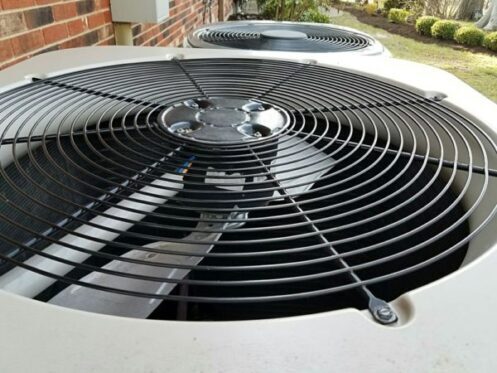Air conditioning is an essential home appliance that provides comfort during hot and humid weather conditions. However, choosing the right air conditioner for your home can be a daunting task, considering the different types available. Two of the most popular types of air conditioning systems are central air conditioning and mini-split air conditioning. Comparing and contrasting central air and mini-split air conditioning systems can help you understand the factors to consider when choosing the best air conditioner for your home.
Mini-Split AC Systems
Over the past few years, more homeowners have replaced their traditional central air systems with the mini-split system. The mini-split system is gaining popularity due to its energy efficiency, cost-effectiveness, simple installation process, and ability to provide customized cooling and heating options throughout the home. It is ideal for homes that don’t have ductwork or don’t have enough space to install traditional central air systems.
Central Air Conditioning
Central air conditioning is a cooling system installed in a building or residence using ductwork to distribute cooled air. Compared to window units, which cool rooms independently of each other, central air conditioning is incredibly efficient, with a cooling capacity that’s significantly higher than a window unit. The system circulates cool air through vents in each room, leading to even, comfortable temperatures throughout the space.
In addition, central air conditioning operates more quietly than window units, with the compressor and fan housing located outside the building. This quiet operation is enabled by the energy efficiency of central air conditioning, which uses less energy than window units that have a smaller size and limited cooling capacity. As a result, central air conditioning can lead to lower utility bills for the building owner or resident.
The Working Mechanism
A central air conditioning system consists of two main parts: an outside unit that houses the compressor, a condenser, and an indoor unit with a fan and evaporator. The two units connect via copper pipes containing refrigerant.
The refrigerant cycles between the outer and inner units to transfer heat from inside to outside. The cooled air is then delivered via ducts throughout a home or business. The size and capacity of your central air conditioning system depend on your region’s climate, local building codes, and energy efficiency requirements.
Mini-Split Air Conditioning Setup
Mini-split air conditioning systems consist of two units, an outdoor condenser and an indoor evaporator. Like the Central air conditioning system, the two units connect via copper tubing that carries refrigerant. The outdoor unit houses a compressor and condensing coil, while the indoor unit contains an evaporator coil, fan, and controls.
Mini-split systems are handy for cooling or heating a room that is difficult to duct from a central air system. They are also ideal for areas where it’s not practical to install traditional ductwork, such as basements or attics with limited space.
Mini-splits are efficient, quiet, and easy to install. They can act as primary systems in smaller homes and offices. They can also work alongside existing HVAC systems to provide additional targeted cooling and heating in specific areas.
Mini-splits are energy-efficient, as they don’t lose the cooled or heated air through ducts like traditional systems do. You can zone them to control the temperature in individual rooms. This feature saves energy by only cooling or heating areas when necessary.
5 Things to Consider When Choosing the Best Air Conditioner for Your Home
1. Efficiency and Operation Costs
Central air systems require ductwork, but they provide excellent energy efficiency. They are ideal for larger buildings because they can condition multiple rooms simultaneously and provide superior air filtration capabilities. Their centralized design makes them easier to maintain.
Mini-split systems are efficient since they do not require ductwork. Ductless systems eliminate energy loss through air leakage and reduce energy costs. Installation is also easier because it requires no extensive ductwork. Mini-split systems offer individual climate control for multiple zones in the same building.
The cost of operating a new air conditioning system varies depending on its efficiency rating. Systems with high SEER ratings use less electricity, which equates to lower monthly utility bills in the long run. Homeowners should look into their local energy providers for information on energy-efficiency rebates and other incentives that may reduce the overall cost of a new air conditioning system.
2. Initial Cost
The initial installation price varies depending on the system chosen, size, and complexity. For example, a window unit costs much less than a central air conditioning system upfront. However, the running costs may be higher due to its less efficient design. A central air conditioning system has a more efficient design and thus lower running costs.
The average cost of a central air conditioning system can range from $2,500 to $7,500, depending on the size and capacity. This price range includes the cost of installation and the requisite components. Higher-end models feature zoning capabilities, multiple fan speeds, energy-saving modes, and programmable thermostats.
The average price of a ductless mini-split system varies between $1,000 and $5,000. This price range is much lower than that of a central air conditioning system. Furthermore, the installation process for ductless mini-split systems is simpler and faster, leading to lower costs.
3. Zoning
Zoning refers to dividing an area into multiple sections with different temperature settings. You can achieve this without adjusting the entire system, and it is ideal for larger spaces. It saves energy by focusing on cooling or heating only where needed instead of wasting resources on the whole area. Mini-split systems are great for zoning as their design allows cooling and heating to individual rooms.
Central air systems require independent zone control for users to customize their system for zoning. It uses a series of dampers and air handlers connected to the main system, which you adjust to send more or less conditioned air to different rooms.
4. Lifespan
Central air units last longer than mini-splits due to their robust construction and lack of outdoor components. Their lifespan is 10-20 years, depending on use and maintenance. Mini-splits have a shorter lifespan of about 10-15 years. Though central air units last longer than mini-splits, they require more maintenance and repairs to keep them in optimal condition.
5. Installation Time
A central air system requires more work and time due to the air handlers stored in an attic or basement. It involves cutting through walls and ceilings to install ductwork and handling the electrical wiring. The process takes a few days or more, depending on the complexity of the installation. A mini-split system takes less time to install due to its simple design and construction. It also does not need major structural changes because its connections are direct to an exterior wall.
Contact Our Professionals for AC Services and Advice
Contact the experts for an efficient, reliable, and cost-effective cooling solution for your home. Professional HVAC technicians can recommend the most suitable system for your space. Our company’s team of certified experts will provide an accurate assessment of your needs and help you find the perfect cooling system for your home. We’re proud to offer a full range of heating, cooling, and indoor air quality services throughout Santa Clarita and the surrounding area. Contact Affordable Air & Heating today to get started!




